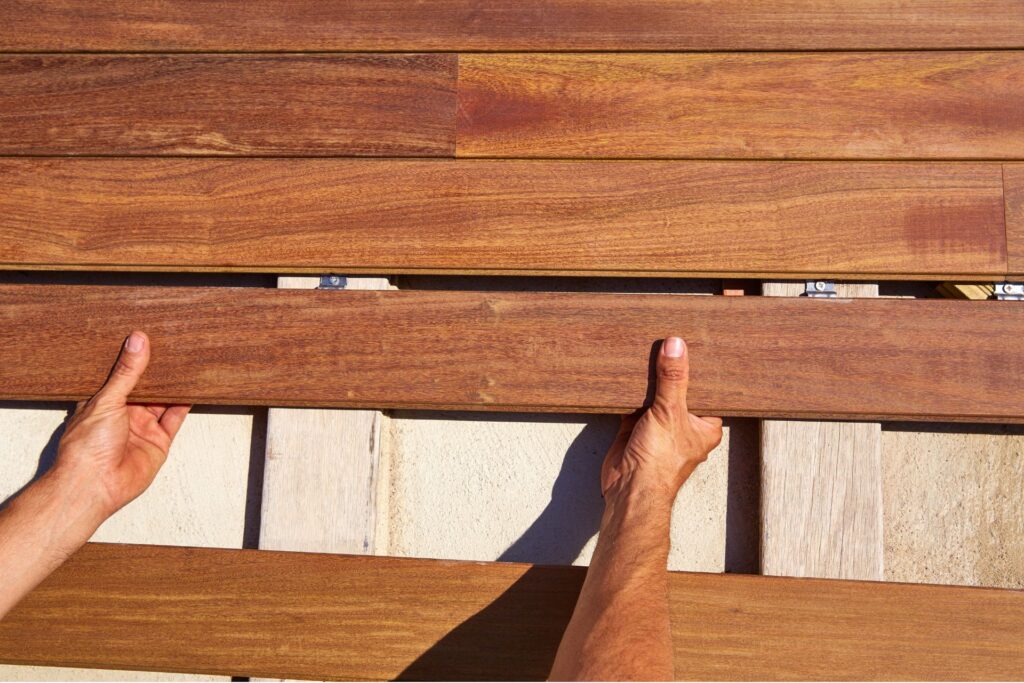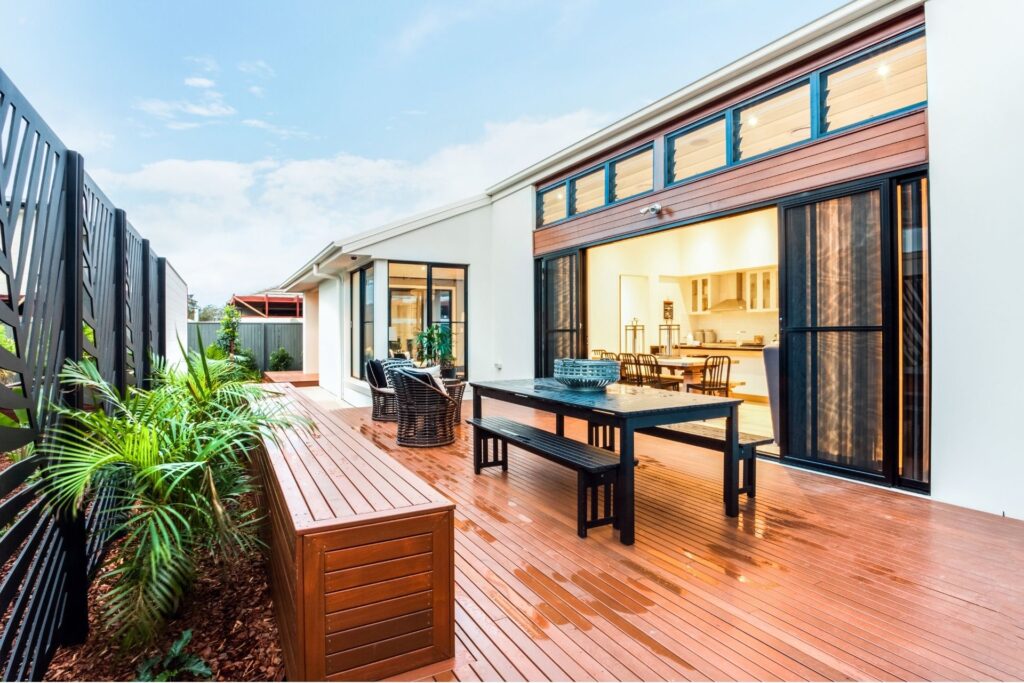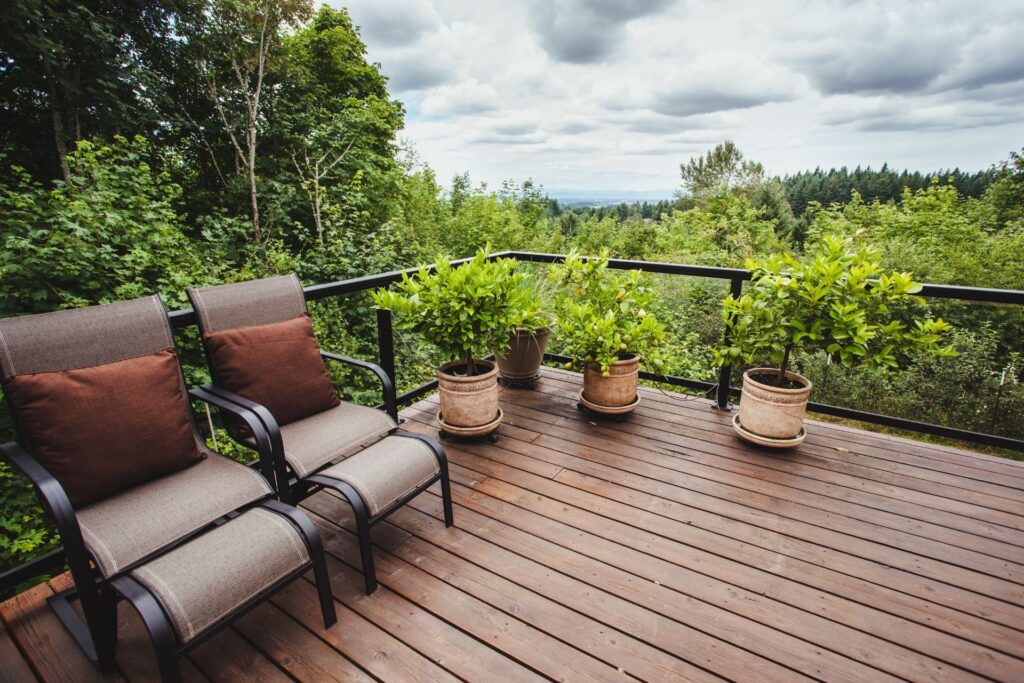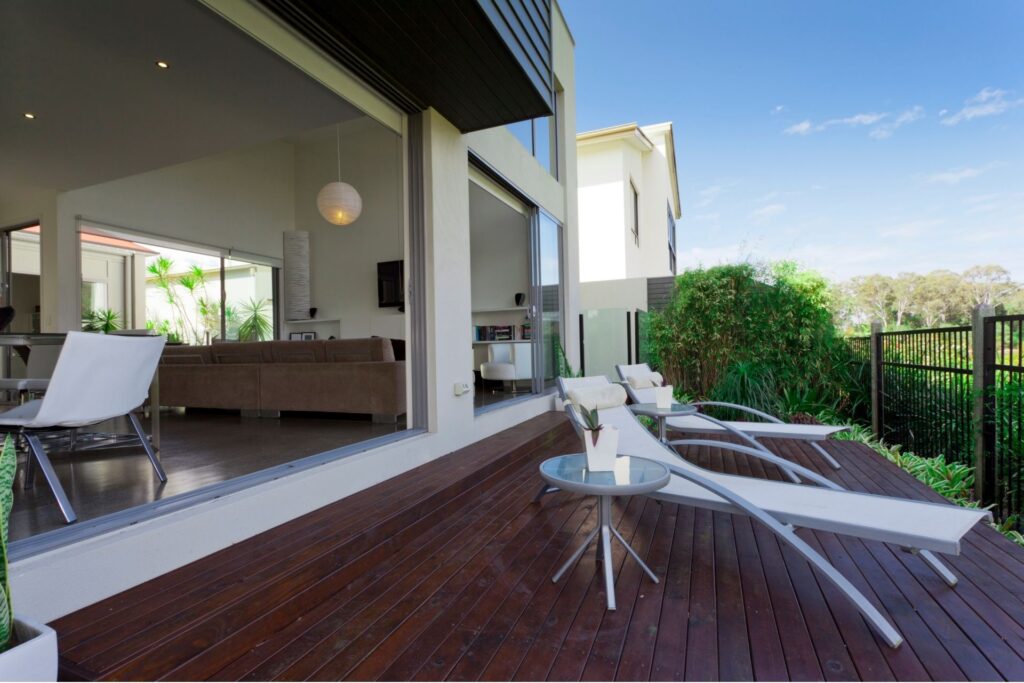Welcome to the ultimate guide on finding the most affordable decking timber in Australia, where your dream outdoor space becomes a reality without breaking the bank. Whether you’re envisioning serene mornings with a cup of coffee on your deck or lively weekend gatherings with friends and family, the right decking timber plays a crucial role in bringing your outdoor oasis to life. In this guide, we delve into everything you need to know about selecting decking timber that not only suits your aesthetic preferences and lifestyle needs but also aligns with your budget. From understanding the benefits and considerations of timber decking to exploring cost-effective options and sustainability, we’re here to navigate the plethora of choices available in the Australian market. Our aim is to arm you with the knowledge to make informed decisions, ensuring that your decking project is as fulfilling and stress-free as possible. Let’s embark on this journey together, transforming your outdoor space into a haven of beauty, comfort, and longevity.
Finding the cheapest decking timber in Australia doesn’t mean compromising on quality. Treated Pine stands out as the most budget-friendly option, offering durability and ease of maintenance. Ideal for those looking to enhance their outdoor space without a hefty price tag, Treated Pine provides a cost-effective solution without sacrificing aesthetics or longevity. With prices significantly lower than other popular timbers like Merbau or Jarrah, Treated Pine allows homeowners to achieve their dream deck at a fraction of the cost. Remember, the key to maximizing your investment in decking timber lies in balancing initial costs with maintenance and lifespan—making Treated Pine an excellent choice for savvy Australian homeowners.
- Why Decking Timber?
- Factors Affecting Timber Decking Costs
- Popular Decking Timbers In Australia And Their Costs
- The Cheapest Decking Timber Options
- Maximizing Your Decking Timber Investment
- Sustainable And Eco-Friendly Decking Options
- Where To Buy Decking Timber In Australia
- FAQs: About Cheapest Decking Timber In Australia
- Conclusion
- Find A Deck Builder Near You
Why Decking Timber?
Overview of Decking Timber
Decking timber, a popular choice among Australian homeowners and builders, is primarily used in the construction of outdoor decks, patios, and even swimming pools. Characterized by its strength and natural beauty, timber decking offers a seamless transition from indoor living spaces to outdoor areas, providing a warm and inviting atmosphere that enhances any home’s aesthetic appeal. This type of decking material is sourced from various types of hardwood and softwood trees, each offering unique shades, textures, and grains, thereby allowing homeowners to customize their outdoor spaces to their liking.
Benefits of Timber Decking
One of the main reasons homeowners opt for timber decking is its unparalleled aesthetic appeal. Timber, with its natural grains and variety of shades, adds a touch of elegance and warmth to outdoor spaces that synthetic materials cannot match. Its versatility in design allows for a range of styles, from modern to rustic, fitting any home’s architectural theme.
In addition to its visual appeal, timber decking is highly durable. When properly treated and maintained, it can withstand harsh weather conditions, making it a long-lasting investment for your home. The natural resilience of certain types of timber, such as teak and blackbutt, makes them resistant to decay, termites, and fungal growth, further extending the lifespan of your deck.
Moreover, timber decking brings a natural vibe to outdoor living areas. The use of wood helps to create a serene and relaxing environment, perfect for unwinding or entertaining guests. This connection to nature can enhance the overall well-being of homeowners, making it a beneficial addition from a holistic perspective.
Considerations When Choosing Decking Timber
While timber decking offers numerous advantages, there are a few considerations to keep in mind before making a decision. One of the primary factors is climate compatibility. Certain types of timber perform better in specific climates; for instance, hardwoods are generally more suitable for areas with high moisture levels due to their natural oil content, which provides added protection against the elements.
Maintenance needs are another important aspect to consider. Timber decking requires regular cleaning, oiling, and sealing to maintain its appearance and durability. The level of maintenance varies depending on the type of wood and the climate it is exposed to. Therefore, it’s essential to choose a timber that fits your lifestyle and willingness to upkeep.
Lastly, the lifespan of decking timber should be taken into account. While timber is a durable material, its longevity can vary significantly depending on the species of wood, the quality of the installation, and how well it is maintained. Investing in high-quality timber and adhering to proper maintenance routines will ensure your deck remains a beautiful and functional part of your home for many years.
By carefully considering these factors, homeowners can select decking timber that not only enhances the beauty of their outdoor spaces but also offers lasting value and enjoyment.
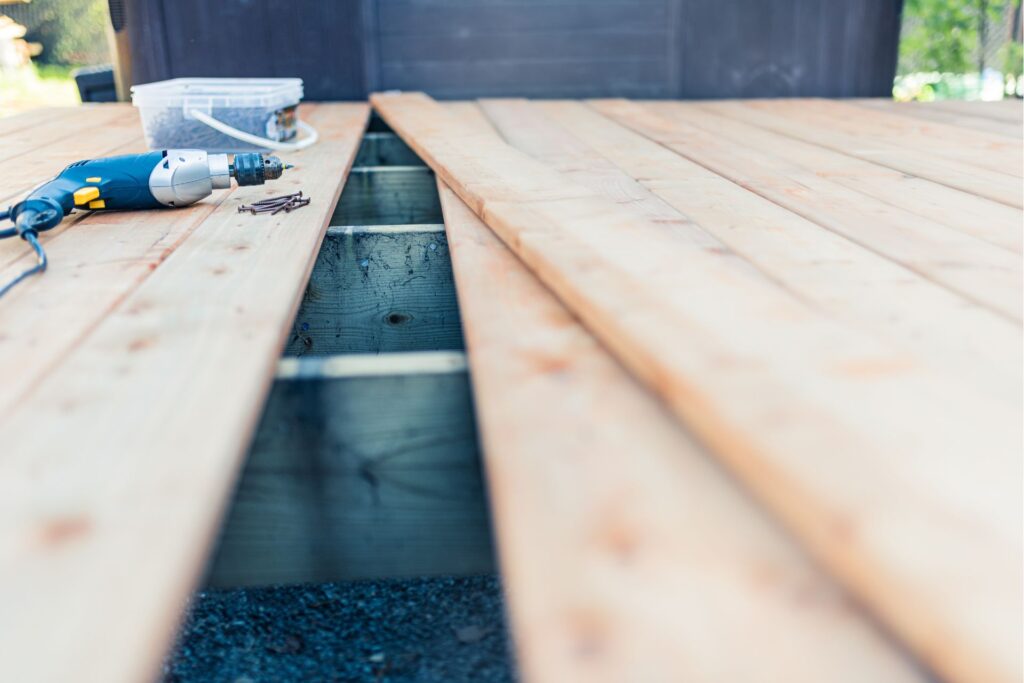
Factors Affecting Timber Decking Costs
When considering adding a timber deck to your outdoor space, understanding the factors that influence the overall cost is crucial. Not only does it help in budgeting accurately, but it also ensures you make informed decisions that balance upfront expenses with long-term value. In this comprehensive guide, we’ll delve into the key elements that affect timber decking costs, including initial purchase price, availability of materials in Australia, and installation complexities.
Initial Purchase Price vs. Long-Term Value
The initial purchase price of timber decking materials can be a significant factor when planning your project. However, it’s essential to consider not just the upfront cost but also the long-term value. High-quality timber may come with a higher price tag initially but often requires less maintenance over time, leading to lower overall costs in the long run. On the other hand, cheaper materials might seem appealing at first but could necessitate frequent repairs or replacements, ultimately increasing the total expenditure. The choice between spending more upfront for durability and aesthetics versus opting for a budget-friendly option that might incur higher maintenance costs down the line is a critical decision for homeowners.
Availability in Australia
The availability of specific timbers in Australia plays a significant role in determining the cost of your decking project. Local Australian timbers, such as Spotted Gum or Blackbutt, are readily available and often more affordable due to lower shipping and handling costs. Conversely, imported timbers like Teak or Merbau might offer unique aesthetics or specific properties but come with higher price tags due to import tariffs, transportation, and limited availability. The ecological impact of sourcing timber also influences cost, with sustainably harvested local woods often being a more cost-effective and environmentally friendly option.
Installation Costs
The complexity of the decking installation process can also affect the overall cost of the project. Simple, straightforward designs are generally less expensive to install compared to more complex arrangements that require additional labor, time, and materials. The terrain of your outdoor space, the need for additional structural support, and the incorporation of features like stairs, railings, or built-in seating can all contribute to higher installation costs. Opting for a professional installation team ensures that the job is done efficiently and to high standards, but it’s important to factor these expenses into your budget planning.
Understanding the factors that influence timber decking costs is essential for any homeowner considering this addition to their outdoor space. By carefully weighing the initial purchase price against long-term value, considering the availability of materials in Australia, and accounting for the complexities of installation, you can make informed decisions that ensure your decking project is both beautiful and cost-effective. Remember, investing in quality materials and professional installation can save money and headaches in the long run, making your timber deck a cherished part of your home for years to come.
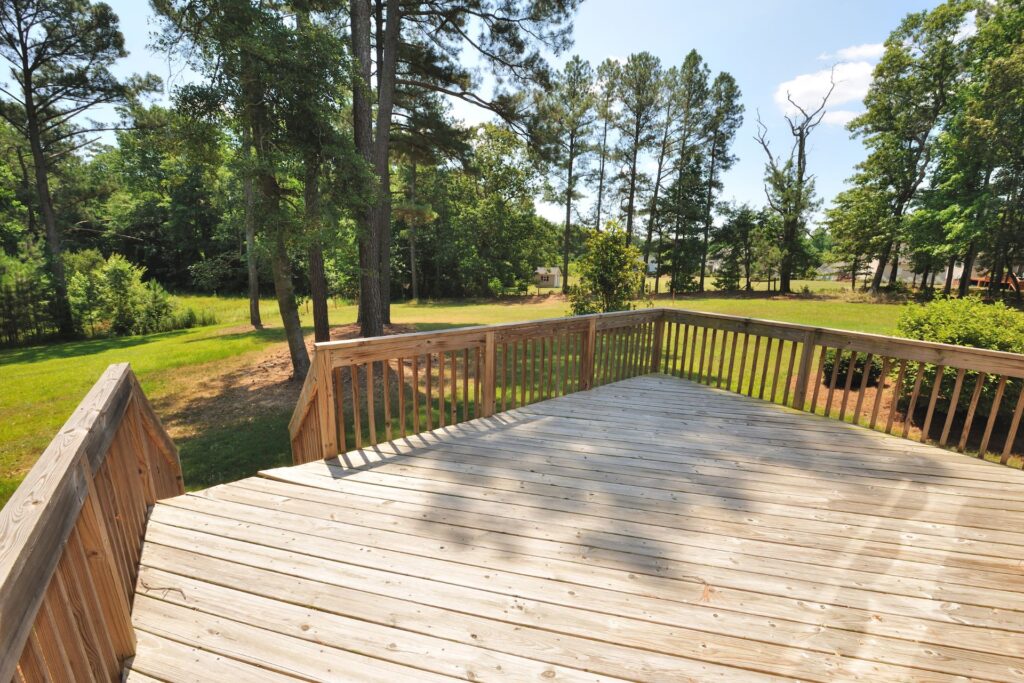
Popular Decking Timbers In Australia And Their Costs
In this guide, we’ll dive into the popular decking timbers in Australia, comparing their costs, and discussing their pros and cons. Whether you’re a homeowner looking to upgrade your outdoor space or a contractor sourcing materials, this guide offers essential insights.
Introduction to Common Timbers
Australia is home to a rich variety of timbers, making it a prime location for sourcing durable and attractive decking materials. Among these, certain types have gained popularity due to their availability, durability, and aesthetic appeal. Here’s a quick overview:
Treated Pine: Known for its affordability and versatility, treated pine is a softwood that’s been chemically treated to resist decay, insects, and moisture. It’s an excellent choice for budget-conscious homeowners.
Merbau: This hardwood is prized for its stunning deep red color that ages gracefully into a silver grey. Resistant to termites and weather, Merbau offers a premium look without the premium price.
Jarrah: With its rich red hue, Jarrah is a durable and fire-resistant timber. It’s a luxurious choice that promises longevity and beauty.
Spotted Gum: Famous for its strength and varied color palette, ranging from dark chocolate to light golden brown, Spotted Gum is a go-to for high-traffic areas.
Blackbutt: Ideal for fire-prone areas, Blackbutt is a robust hardwood with a light, attractive color. It’s resistant to fire and termites, making it a safe and durable option.
Price Comparison
When it comes to decking, cost is a significant consideration. Let’s break down the average prices of these timbers, focusing on affordability:
Treated Pine is the most budget-friendly option, making it a great choice for large projects or when minimizing costs is crucial.
Merbau sits in the mid-range in terms of cost. Its balance of beauty, durability, and price makes it a favorite among homeowners.
Jarrah and Blackbutt are on the higher end of the price spectrum. Their exceptional durability and aesthetic appeal justify the investment, especially in regions prone to bushfires or termites.
Spotted Gum, while not the most expensive, still requires a significant investment. Its versatility and unique appearance make it worth the cost for many.
Pros and Cons
Each timber type has its advantages and disadvantages, influencing its value for money. Here’s a detailed look:
Treated Pine: While cost-effective and versatile, it’s less durable than hardwoods and may not have the same visual appeal.
Merbau: It’s beautiful and durable but can bleed tannins when wet, which requires consideration during installation near light-colored surfaces.
Jarrah: Offers unmatched beauty and durability but at a higher cost. Its density also makes it more challenging to work with.
Spotted Gum: Highly durable and aesthetically pleasing, but its variability in color might not suit all tastes.
Blackbutt: Excellent for bushfire zones and resistant to pests, but its hardness can make installation more labor-intensive.
In conclusion, selecting the right decking timber in Australia depends on a variety of factors, including budget, aesthetic preferences, and functional requirements. By understanding the unique properties, costs, and considerations associated with each timber type, homeowners and contractors can make informed decisions that balance beauty, durability, and value. Whether you’re drawn to the affordability of treated pine, the premium look of Jarrah, or the fire resistance of Blackbutt, there’s a timber option to suit every project and preference.

The Cheapest Decking Timber Options
Embarking on a home improvement project, especially one that involves decking, can be an exciting yet daunting task. The choice of materials not only influences the aesthetic appeal and longevity of your deck but also has a significant impact on your budget. In this guide, we’ll dive into the world of decking timbers, focusing on the most cost-effective options available in Australia. Our goal is to help you create a beautiful outdoor space without breaking the bank.
Identifying the Most Affordable Decking Timber Options
When it comes to decking materials, Australia offers a wide range of options. However, not all timbers are created equal, especially regarding cost. Through meticulous comparison, we’ve identified several decking timber options that stand out for their affordability:
Treated Pine: Often hailed as the most budget-friendly option, treated pine is widely available and offers a great balance between cost and durability. Its treatment with preservatives makes it resistant to rot, decay, and insects, ensuring a longer lifespan.
Merbau: While slightly more expensive than treated pine, Merbau is still considered an affordable choice. It’s known for its durability and resistance to weather conditions, making it a popular option for Australian decks.
Blackbutt: This native Australian hardwood is not only beautiful but also reasonably priced. It’s fire-resistant and suitable for use in bushfire-prone areas, adding to its value.
These timbers are favored for decking due to their combination of affordability, durability, and aesthetic appeal. Their cost-effectiveness makes them ideal choices for homeowners looking to enhance their outdoor living spaces without overspending.
Why They Are Cheaper
Several factors contribute to the affordability of these decking materials:
Availability: Treated pine, Merbau, and Blackbutt are readily available in Australia. Their abundance helps keep costs down, making them accessible options for a wide range of budgets.
Lower Maintenance Costs: Treated pine, for instance, requires less upkeep compared to more premium timbers. Its treatment ensures it withstands the elements better, resulting in fewer maintenance expenses over time.
Sustainability: Materials like Blackbutt are sourced from sustainable forests, which can sometimes reduce costs associated with transportation and production, passing the savings on to the consumer.
In summary, choosing the right decking material involves considering both the initial investment and long-term costs. Treated pine, Merbau, and Blackbutt offer Australian homeowners cost-effective solutions that don’t compromise on quality or aesthetics. By selecting one of these affordable decking timber options, you can create a stunning outdoor space that will last for years to come, all while staying within your budget. Whether you’re aiming for a cozy backyard retreat or a sprawling outdoor entertainment area, these timbers provide the perfect foundation for your decking project.

Maximizing Your Decking Timber Investment
When it comes to enhancing your outdoor space, a timber deck can be a transformative investment. Not only does it add aesthetic appeal and functional space to your home, but it also has the potential to increase property value. However, like any significant home improvement project, the key to maximizing your investment lies in careful planning and execution. In this section, we delve into essential strategies for choosing the right decking timber, maintaining your deck to ensure its longevity, and deciding between DIY and professional installation. Let’s embark on a journey to make the most of your decking timber investment.
Choosing the Right Timber for Your Needs
The foundation of a long-lasting and beautiful deck starts with selecting the appropriate timber. Here are practical tips to guide you in making the best choice for your specific needs:
Consider the Climate: Your local climate plays a pivotal role in your timber choice. For areas prone to harsh weather conditions, opt for species that boast natural resistance to rot, decay, and insect damage, such as teak, cedar, or composite materials.
Balance Cost and Quality: While it’s tempting to choose the least expensive option, remember that the quality of timber directly affects its durability and appearance over time. Hardwoods, although more costly upfront, tend to offer better longevity and less maintenance in the long run compared to softwoods.
Aesthetics Matter: The color, grain, and texture of the timber should complement your home’s exterior design. Visit local suppliers to view samples in person, ensuring the material aligns with your aesthetic preferences.
Sustainability: Opt for timber sourced from sustainably managed forests to contribute to environmental conservation. Look for certifications like FSC (Forest Stewardship Council) or PEFC (Program for the Endorsement of Forest Certification).
Maintenance Tips to Extend Timber Life
Regular maintenance is crucial to prolonging the life of your decking and safeguarding your investment. Here are some effective strategies:
Routine Cleaning: Sweep your deck regularly to remove debris and dirt. Annually, deep clean the timber using a mild soap solution and a soft-bristle brush to prevent mold and mildew buildup.
Seal and Protect: Apply a high-quality deck sealant every two to three years to protect against moisture, UV damage, and wear. This not only extends the life of your deck but also maintains its appearance.
Immediate Repairs: Address any signs of damage, such as splintering or loose boards, promptly to prevent further deterioration.
DIY vs. Professional Installation
The decision between DIY and hiring professionals for your deck installation impacts both the cost and quality of the project:
DIY Installation: For those with carpentry skills and a well-equipped toolkit, DIY installation can offer significant savings. It also provides a sense of accomplishment. However, it’s essential to realistically assess your skill level and the complexity of the project before committing. Mistakes can be costly and may affect the deck’s durability and safety.
Professional Installation: Hiring experienced contractors might increase the initial cost, but it ensures a quick, efficient, and high-quality installation. Professionals can also navigate any permitting requirements and offer warranties on their work. For complex designs or if you’re not confident in your DIY abilities, this option might save money and headaches in the long run.
By carefully selecting the right timber, maintaining your deck, and weighing the pros and cons of DIY versus professional installation, you can significantly enhance the longevity, beauty, and value of your decking investment. Remember, a well-planned and executed decking project not only offers immediate enjoyment but also contributes to the overall appeal and worth of your home for years to come.
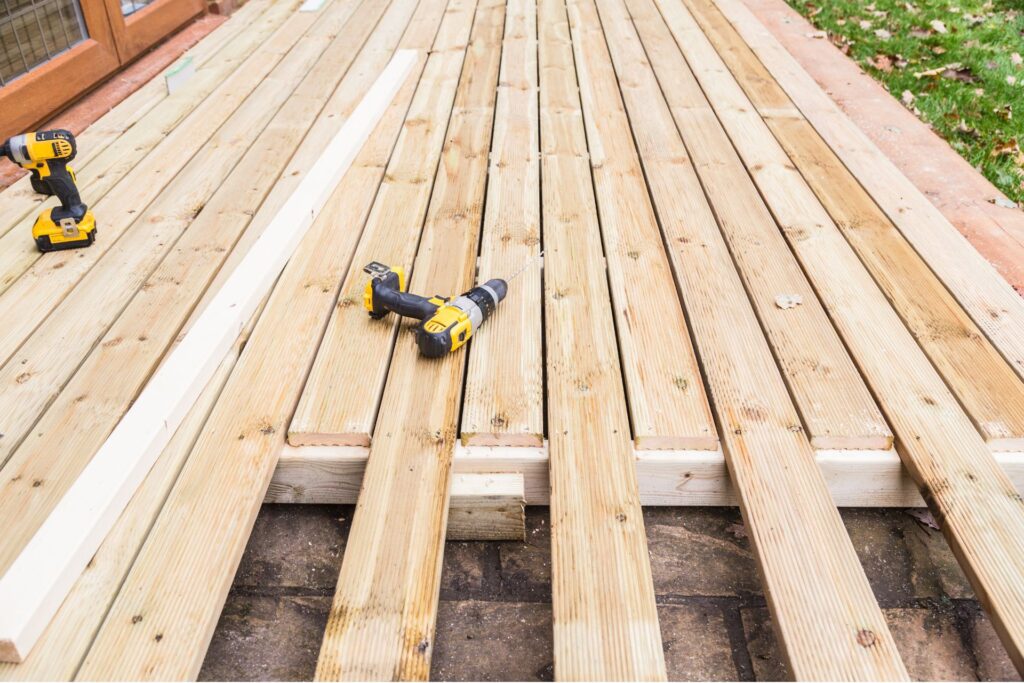
Sustainable And Eco-Friendly Decking Options
When it comes to decking, sustainability isn’t just a buzzword—it’s an essential consideration for homeowners and builders aiming to reduce their environmental impact. The choice of materials can have a significant effect on the world around us. This guide delves into the importance of selecting sustainable decking options and provides insights into eco-friendly timber choices that not only benefit the planet but also offer durability and aesthetic appeal.
Understanding the Environmental Impact of Timber Decking
The use of timber in decking has a dual-edged sword effect on the environment. On one side, wood is a natural, renewable resource that, if sourced responsibly, can be an eco-friendly choice. On the other, unsustainable logging practices contribute to deforestation, loss of biodiversity, and climate change. The production process, from logging to treatment and transportation, also adds to the carbon footprint of timber decking.
Choosing sustainable decking materials is a step towards mitigating these impacts. It supports the conservation of forests and the ecosystems they support, ensuring that timber resources remain available for future generations while also reducing the overall environmental footprint of decking projects.
Eco-Friendly Timber Choices for Your Deck
Not all timber is created equal when it comes to sustainability. Here are some factors to consider when selecting eco-friendly timber for your decking:
Sustainable Sources: Look for wood sourced from sustainably managed forests. These are areas where trees are harvested at a rate that allows the forest to regenerate, maintaining its ecological functions and biodiversity. Certifications such as the Forest Stewardship Council (FSC) or Programme for the Endorsement of Forest Certification (PEFC) are reliable indicators of sustainably sourced timber.
Low-Impact Materials: Some types of wood have a lower environmental impact due to their growth rate, local availability, and lesser need for chemical treatments. For instance, bamboo (though technically a grass) is highly renewable due to its fast growth rate and has become a popular eco-friendly decking material. Locally sourced timber also reduces transportation emissions, making it a more sustainable choice.
Recycled and Reclaimed Wood: Reusing wood from demolished buildings or leftover construction materials is an excellent way to reduce waste and the demand for new timber. Recycled decking materials can offer the same beauty and durability as new wood but with a significantly lower environmental footprint.
Durability and Maintenance: Choosing a durable wood type can also be eco-friendly in the long run. Durable woods require less frequent replacement and maintenance, reducing the need for additional resources and chemicals over the life of the deck.
Certifications to Look For
When shopping for timber, certifications can guide you toward more sustainable choices. The FSC and PEFC logos are internationally recognized symbols of sustainable forest management. These certifications ensure that the wood has been sourced from forests that are managed responsibly, considering environmental, social, and economic standards.
Making a Difference with Sustainable Decking Choices
By selecting sustainable and eco-friendly decking materials, you’re not just creating a beautiful outdoor space for your home. You’re also making a positive impact on the environment. It’s about making informed choices that ensure the well-being of our planet while enjoying the natural beauty and warmth that wood decking provides.
Incorporating sustainable practices into your decking project doesn’t have to be complicated. With the right information and a little effort, you can choose materials that align with your environmental values without compromising on quality or aesthetics.

Where To Buy Decking Timber In Australia
When planning a decking project in Australia, one of the key decisions is where to purchase your decking timber. This decision can significantly affect both the quality of the material and the overall cost of the project. With options ranging from local hardware stores to online suppliers, it’s essential to weigh the pros and cons of each to find the best deals. This comprehensive guide will walk you through everything you need to know to make an informed decision.
Local vs. Online Suppliers
Local Hardware Stores
Pros
Personalized Service: One of the biggest advantages of buying from a local hardware store is the personalized service. Staff can offer expert advice, answer your questions, and help you select the right timber for your project.
See Before You Buy: You can physically inspect the quality of the timber, ensuring it meets your standards before making a purchase.
Immediate Availability: When buying locally, you can take the timber home the same day, which is ideal for tight project timelines.
Cons
Higher Prices: Local stores often have higher prices due to the costs associated with maintaining a physical storefront.
Limited Selection: They may not have as wide a selection as online suppliers, limiting your options for decking materials.
Online Suppliers
Pros
Wider Selection: Online suppliers typically offer a broader range of timber options, including exotic and hard-to-find species.
Competitive Pricing: Without the overhead costs of a physical store, online suppliers can offer more competitive prices.
Convenience: Shopping online is convenient, allowing you to compare different suppliers and products from the comfort of your home.
Cons
Cannot Inspect Before Buying: You won’t be able to physically inspect the timber before purchasing, which can be risky.
Shipping Costs: Depending on your location, shipping costs can be high and may negate the savings from lower prices.
Delivery Times: You’ll need to plan for delivery times, which can delay your project start.
Tips for Finding the Best Deals
Watch for Sales: Both local and online suppliers run sales, especially during off-peak seasons. Sign up for newsletters and follow your preferred suppliers on social media to stay informed about upcoming sales.
Consider Bulk Buying: If your project is large, buying in bulk can save money. Many suppliers offer discounts for large orders.
Negotiate Prices: Don’t be afraid to negotiate, especially with local stores. If you’re buying a significant amount of timber, ask if there’s any room for price adjustment.
Quality vs. Price: Remember, the cheapest option isn’t always the best. Consider the quality and sustainability of the timber, as these factors can affect the longevity and appearance of your deck.
Read Reviews: Before purchasing from an online supplier, read customer reviews and check their return policy. This can give you insight into the quality of their products and customer service.
Finding the right supplier for decking timber in Australia requires balancing quality, cost, and convenience. By considering the pros and cons of local versus online suppliers and following our tips for finding the best deals, you can ensure you select the right timber for your decking project. Remember, investing time in research can lead to significant savings and a more successful project outcome.

FAQs: About Cheapest Decking Timber In Australia
Conclusion
In wrapping up our talk on decking projects, remember the key points we’ve hit on: choosing materials wisely, budgeting smart, and not forgetting about upkeep. Think about both the upfront costs and the long-term benefits to make sure you’re making a choice you’ll be happy with for years. Now’s the time to take what you’ve learned and get started on your decking project. This advice is meant to give you the confidence and excitement to dive in. So, why wait? Start planning your dream deck today, keeping all these tips in mind for a beautiful, lasting result.
Find A Deck Builder Near You
About the Author:
Mike Veail is a recognized digital marketing expert with over 6 years of experience in helping tradespeople and small businesses thrive online. A former quantity surveyor, Mike combines deep industry knowledge with hands-on expertise in SEO and Google Ads. His marketing strategies are tailored to the specific needs of the trades sector, helping businesses increase visibility and generate more leads through proven, ethical methods.
Mike has successfully partnered with numerous companies, establishing a track record of delivering measurable results. His work has been featured across various platforms that showcase his expertise in lead generation and online marketing for the trades sector.
Learn more about Mike's experience and services at https://theleadguy.online or follow him on social media:

